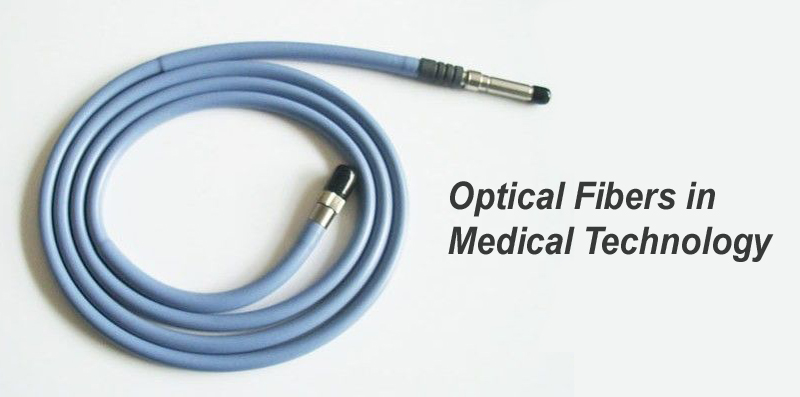Int'l : +1(646) 600-5072 | query@kbvresearch.com
Int'l : +1(646) 600-5072 | query@kbvresearch.com
Published Date : 23-Sep-2020 |

As healthcare providers are attempting to discover technically more advance biomedical instruments that will make the diagnosis, and treatment processes more efficient. There is an increase in endoscopic procedures as it is helpful in early diagnosis of cancer and many other chronic diseases, therefore medical fiber optics is growing in demand. Additionally, the growing adoption of technologically advanced products in healthcare sectors and rising awareness among the people about the minimally invasive surgeries are the key factors resulting in the increased adoption of medical fiber optics.
Before understanding what a Medical Fiber Optics is, we should know what fiber optics means. Fiber optics also called optical fiber is a thin and flexible fiber made up of glass or plastic. In this fiber data, voice, images, and information are transmitted in the form of the light pulse by internal reflection. It is commonly used in telephone, television, and the internet. Medical fiber optics is not anything different from optic fiber, in fact, it is one of the application areas of the optic fiber. A bundle of such fibers is used to design biomedical instruments and devices. Medical Fiber Optics are commonly used in the imaging and illumination components of medical instruments such as endoscopy.
As the name suggests, this type of fiber propagates only one type of light at a time. The diameter of the core of this fiber is smaller and about 9 micrometers. Since the fiber is very thin, so there is not much attenuation. It is suitable for application at long distances but costlier than Multimode Optical Fiber.
This type of optical fiber enables the propagation of more than the type of light at a time. The core diameter of Multimode Optical Fiber is a little thicker than that of Single-Mode Optical Fiber which ranges from 50 to 60 micrometers. Due to higher thickness, there is more attenuation. It is cheaper in price and mostly used short-distance runs.
For many decades optics have been used for diagnosis and to provide therapeutic treatment of diseases. The arrival of optical fiber in the twentieth century has facilitated the designing of new medical devices and instruments and it brought a revolution in the healthcare sector. Manipulation of light and images obtained from optical instruments help doctors to have better visual examination and diagnosis.
A new trend of minimally invasive surgery (MIS) has been introduced in the healthcare sectors for performing minor surgeries, it eliminates the need to cut and painful invasion. MIS also minimizes post-surgery pain and discomfort. Fiber optics are also exploited in medical imaging, sensing devices, MRI, PET, and CT scans.
Medical Fiber Optics is most commonly used in endoscopy in which it provides improved illumination and magnification of the internal cavities of the body. It is also helpful in the detection of disease, surgical guidance, to investigate symptoms, and performing biopsies.
It is safe to use Biomedical Sensing to measure chemical, biological, and physiological parameters of the body. These sensing devices don’t interfere with other parameters and can be remotely controlled. Biomedical Sensing is widely used in monitoring various parameters like heart rate, blood velocity, body temperature, etc. Medical Fiber Optics are also used in the Laser Signal Delivery system.
Light possesses energy and that energy is accomplished to interact with the biological tissues and organs. Therefore it facilitates the diagnosis and analysis of the internal organs. Prior to the introduction of endoscopy, invasive surgeries were used to inspect the internal parts of the body.
In endoscopy, high power lasers are used if it is required to destroy certain tissue with the used of endoscopy. Endoscopy is used in routine examinations of the colon, stomach, and esophagus. Through endoscopy, surgical tools are used for cutting and illumination to perform surgery.
Medical Fiber Optics has become a valuable asset in the healthcare field. As they own many useful features and have numerous advantages which include the following:
The Medical Fiber Optics Market has been witnessing rapid growth due to the rise in the awareness about the minimally invasive surgical procedure and more adoption of the advanced technological instruments. These factors are boosting the demand for Medical Fiber Optics in healthcare sectors. Medical Fiber Optics is most widely used in endoscopy procedures which is beneficial in early diagnosis and treatment of diseases.
Currently, with evolving technology, lasers are also used in dentistry and cosmetology, and thereby it is exploring the application of medical fiber optics in biomedical sectors. Although the higher cost of medical fiber optics is expected to impede market growth. However, the advantages associated with the use of Medical Fiber Optics in medical instruments and equipment are encouraging healthcare providers to adopt such products. The Global Medical Fiber Optics Market has been anticipated to rise at a growth rate of 5.6% CAGR over the forecast period.